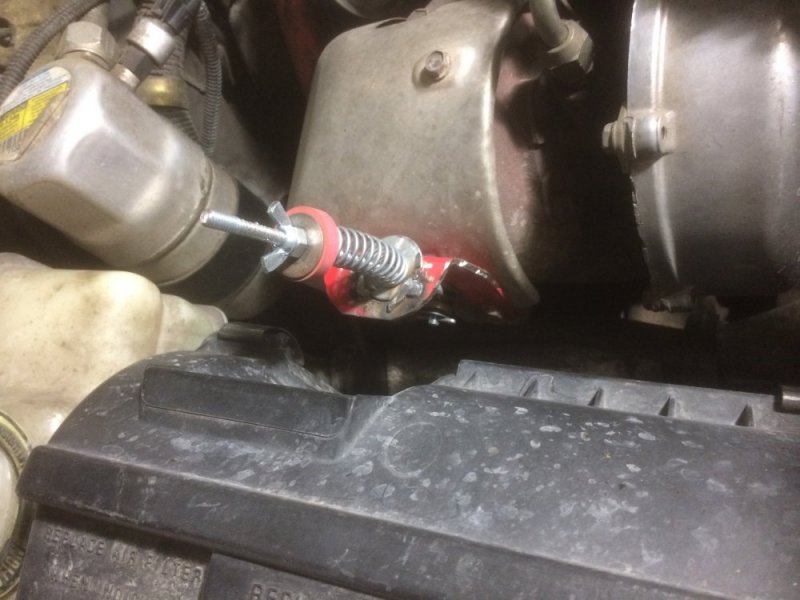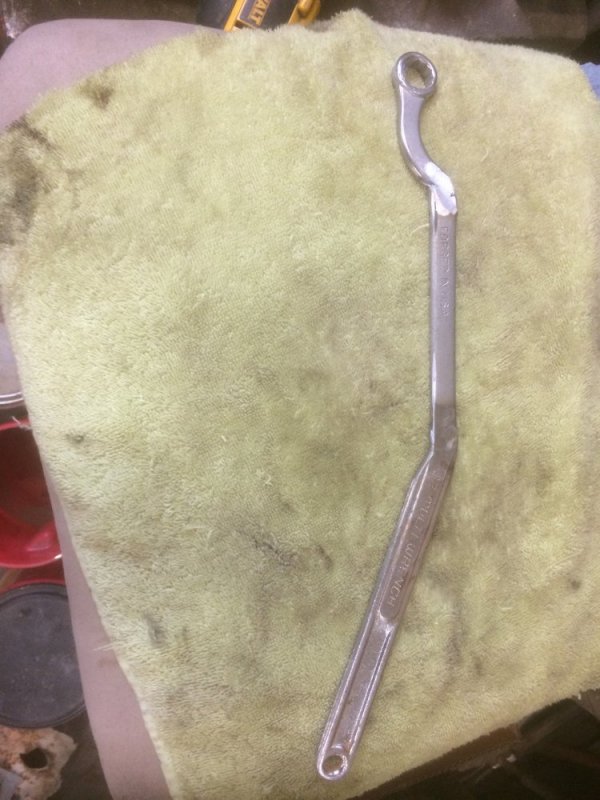MrMarty51
Well-Known Member
The waste gate system on My 2000 K350 had began acting up.
It took it a very long time before it set the code P0236, waste gate system A or some such.
I messed with it, installed two vacuum gauges to the solenoid, vacuum was constant on the + side and seemed to work okay on the - side.
I used My vacuum pump and checked the actuator, it was moving freely without any binding whatever.
I then back probed and connected a volt meter to the 5 volt reference wire at the boost sensor, even when the turbo was acting up and not giving any boost, according to the boost pillar gauge, the reference signal of 5 volts was constant.
Hooked the meter to the signal out wire, went for a drive, vltages there seemed normal and with 0 to very low boost was, I think, around 2.15 volts, running wiit boost on the hills, it would climb, if I remember correctly, into the low 4 volt range, then, the boost pillar gauge would fall, go to 0 psi and 0 volts.
Installed a new boost sensor, same results.
The difficult task of getting back to the wire connectors at the back of the engine was accomplished and using the hand held bead blaster, cleaned the connections as good as possible.
That seemed to help quite a bit. I guess I should get back there and do some more cleaning then see if it would act as it should. Being in quite a bit of constant pain, makes this a very difficult task, so, My plan, pull the engine, clean it up, not that it is very dirty as it is relatively clean, then add in a new rear main seal then, climb into the engine compartment and clean and shine every terminal in there.
In the mean time I made up this bracket from an old bent air tank/compressor mount and built a manual waste gate controller according to instructions I found someplace on the innernet, except for instead of taking apart the good vacuum actuator, made My own bracketry.
I works quite well, I think.
Driving on the highway I have it adjusted to around 2 to 3 PSI of boost, according to the pillar gauge. On a heavy pull empty, it will get to around five or six pounds of boost.
Pulling the camper, on a fairly steep hill, it tops at around 8 pounds of boost.
At this setting, about one to one and a half turns of the adjuster nut will take it to ten or more PSI of boost.
here is a pic of the controller unit.

It took it a very long time before it set the code P0236, waste gate system A or some such.
I messed with it, installed two vacuum gauges to the solenoid, vacuum was constant on the + side and seemed to work okay on the - side.
I used My vacuum pump and checked the actuator, it was moving freely without any binding whatever.
I then back probed and connected a volt meter to the 5 volt reference wire at the boost sensor, even when the turbo was acting up and not giving any boost, according to the boost pillar gauge, the reference signal of 5 volts was constant.
Hooked the meter to the signal out wire, went for a drive, vltages there seemed normal and with 0 to very low boost was, I think, around 2.15 volts, running wiit boost on the hills, it would climb, if I remember correctly, into the low 4 volt range, then, the boost pillar gauge would fall, go to 0 psi and 0 volts.
Installed a new boost sensor, same results.
The difficult task of getting back to the wire connectors at the back of the engine was accomplished and using the hand held bead blaster, cleaned the connections as good as possible.
That seemed to help quite a bit. I guess I should get back there and do some more cleaning then see if it would act as it should. Being in quite a bit of constant pain, makes this a very difficult task, so, My plan, pull the engine, clean it up, not that it is very dirty as it is relatively clean, then add in a new rear main seal then, climb into the engine compartment and clean and shine every terminal in there.
In the mean time I made up this bracket from an old bent air tank/compressor mount and built a manual waste gate controller according to instructions I found someplace on the innernet, except for instead of taking apart the good vacuum actuator, made My own bracketry.
I works quite well, I think.
Driving on the highway I have it adjusted to around 2 to 3 PSI of boost, according to the pillar gauge. On a heavy pull empty, it will get to around five or six pounds of boost.
Pulling the camper, on a fairly steep hill, it tops at around 8 pounds of boost.
At this setting, about one to one and a half turns of the adjuster nut will take it to ten or more PSI of boost.
here is a pic of the controller unit.


